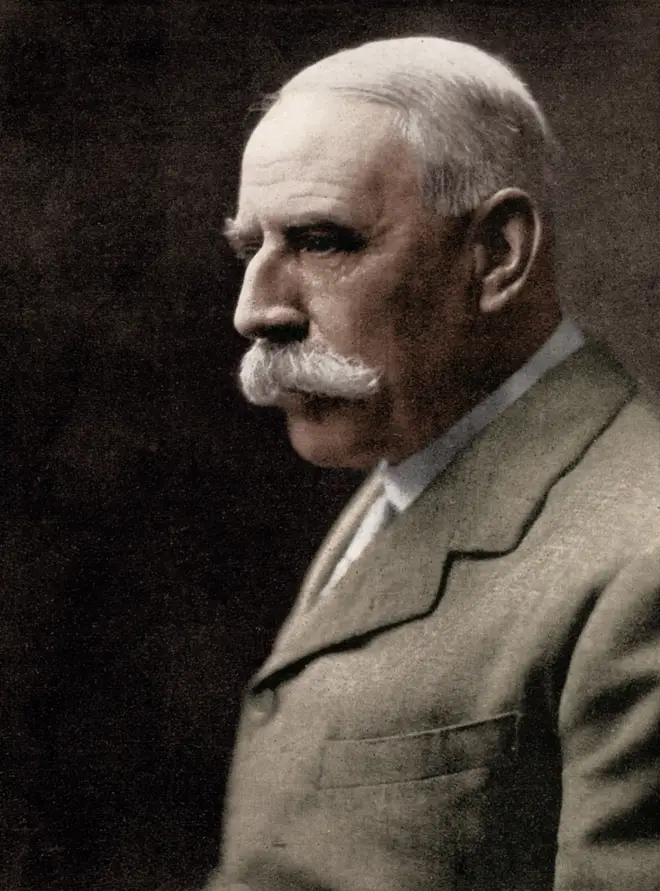Young composer ‘solves’ Elgar’s Enigma – and it’s pretty convincing
1 May 2019, 13:15 | Updated: 1 May 2019, 13:56
Elgar’s Enigma Variations is one of the greatest pieces of the 19th century – but people have puzzled over its hidden theme for years.
In 1899, Sir Edward Elgar wrote his beautiful Enigma Variations, that would contain one of the most moving melodies ever written (its ‘Nimrod’ theme).
But Elgar, not content with writing a beautiful piece of music, claimed to have hidden a musical puzzle deep in the heart of his Variations.
Here’s a note he left explaining the puzzle: “The Enigma I will not explain – its ‘dark saying’ must be left unguessed, and I warn you that the connection between the Variations and the Theme is often of the slightest texture. Further, through and over the whole set another and larger theme ‘goes’, but is not played… so, the principal Theme never appears.”
Essentially, the principal theme of the piece is never actually heard, and the ‘Enigma’ theme we do hear is just a counterpoint on the principal theme.

Over the years, historians and musicologists have claimed to have solved the Enigma, but there’s never been a conclusive answer.
Now, Ed Newton-Rex, a composer and alumnus of the Choir of King’s College Cambridge, claims to have cracked the code.
The hidden theme in the Enigma Variations, he claims, is Pergolesi’s Stabat Mater, a haunting piece of choral music from the 18th century.
“I started thinking about what I’d write if tasked with writing a counter-melody to the opening theme, improvising things that worked well with it,” Newton-Rex writes in an essay on his theory. “Almost immediately what I was writing reminded me of something: Pergolesi’s Stabat Mater.”
When the two pieces are played alongside each other (and when Stabat Mater is transposed up a tone), the fit is “pretty astounding”, Newton-Rex writes.

Pergolesi׃ Stabat mater, for soprano & alto ¦ Les Talens Lyriques
Why has no one figured this out before?
The mistake musicologists have made before, Newton-Rex argues, is expecting the new ‘phrase’ to fit perfectly over the top of the fully-scored Enigma Variations.
“But this isn’t how Elgar said the counterpoint should work,” he says.
In an interview with the Musical Times in 1900, Elgar clarified the nature of the ‘Enigma’: “Mr Elgar tells us that the heading Enigma is justified by the fact that it is possible to add another phrase, which is quite familiar, above the original theme that he has written.”
Elgar further clarifies this in his 1905 biography: “The theme is a counterpoint on some well-known melody which is never heard.”
So the ‘Enigma’ theme is a counterpoint on the hidden melody – not the other way around. This means that the ‘Enigma’ theme should fit over the top of the hidden melody.
Why Stabat Mater?
Firstly, Stabat Mater was the most frequently published piece of music of the 18th century. It had already been popular for a long time before Elgar started composing – so he undoubtedly knew of the piece, and was aware of its popularity.
When played alongside all the vocal parts of Stabat Mater, the ‘Enigma’ theme fits perfectly over the harmonies, Newton-Rex argues. Plus, it fits well over just the Stabat Mater’s characteristic bass line, and matches the six-bar length of the choral piece.
Stabat Mater also involves a “dark saying”, matching up with Elgar’s original description.
“The subject matter of the Stabat mater — the crucifixion — provides a compelling reason Elgar would have chosen to refer to it this way,” argues Newton-Rex, co-founder of the AI music composition company Jukedeck.

Which other pieces have been proposed?
Over the years, historians and musicologists have suggested a number of ‘perfect fits’ for the Enigma theme, including Rule Britannia, Beethoven’s ‘Pathétique’ Sonata and, curiously, the number Pi. However, Newton-Rex dismisses these proposals, saying none of them fit perfectly over the whole of the Enigma theme.
“Rule Britannia is in the major where the Enigma theme is in the minor, and [...] if you try the whole of Rule Britannia with the Enigma theme it doesn’t work at all.”
What has the response been like?
Newton-Rex told Classic FM: “The response I’ve had to this theory has been great – some people seem convinced, and even those for whom the jury is still out seem to think there’s merit to it.
“Most importantly, though, people who have come across it from outside the world of classical music have told me they went and listened to the Enigma Variations for the first time as a result – and I think there can be no better outcome than getting more people listening to this amazing music.”
























